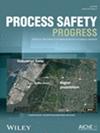管理小型制造行业装配操作员的人体工程学风险评估
IF 1
4区 工程技术
Q4 ENGINEERING, CHEMICAL
引用次数: 0
摘要
在小型制造行业,员工的健康和安全是提高生产率和质量的最重要方面。在小型制造行业的工作环境中,缺乏对人体处理和人体工程学方法的风险评估,相关信息也很有限。本研究旨在分析装配操作员的人体操作风险因素与工作相关肌肉骨骼疾病(WMSD)症状之间的关联,并使用人体工程学风险评估工具(如快速上肢评估(RULA)和快速全身评估(REBA))评估针对高风险工作任务的人体工程学干预建议。对七个工作类别进行了问卷调查和观察。使用 RULA 和 REBA 进行的分析表明,清洁、装配和组装工作的风险水平较高,需要进行人体工程学干预。针对高风险工作任务,使用 CATIA 软件创建了拟议人体工学工作站的虚拟设计,并使用 RULA 和 REBA 分析进行了评估。结果发现,工作和组织因素是导致 WMSD 的主要因素,而个人因素、意识水平和人体工程学风险评估对 WMSD 的影响并不明显。根据 RULA 和 REBA 评分,建议的人体工程学干预措施可显著降低 30%-47% 的风险,从而改善不同工作活动中操作人员的整体健康和安全状况。本文章由计算机程序翻译,如有差异,请以英文原文为准。
Managing ergonomic risk assessment among assembly operators in the small-scale fabrication sector
In the small-scale fabrication sector, employee health and safety are the most important aspects for improving productivity and quality. There is a lack of risk assessment and limited information on human handling and ergonomic approaches in the working environment of the small-scale fabrication sector. This study aims to analyze the association of human handling risk factors with work-related musculoskeletal disorder (WMSD) symptoms among assembly operators and to evaluate the proposed ergonomic intervention for a high-risk work task using ergonomic risk assessment tools such as Rapid Upper Limb Assessment (RULA) and Rapid Entire Body Assessment (REBA). A questionnaire survey and observation were conducted across seven work categories. The analysis using RULA and REBA revealed that cleaning, fitting, and assembling have a high-risk level that requires ergonomic intervention. The virtual design of the proposed ergonomic workstation for high-risk work tasks was created using CATIA software and evaluated using RULA and REBA analyses. Job and organizational factors were found to be the main contributors to WMSD, while individual factors, awareness levels, and ergonomic risk assessment had insignificant effects on WMSD. Based on RULA and REBA scores, the proposed ergonomic intervention significantly reduces risk by 30%–47%, improving overall health and safety for operators in diverse work activities.
求助全文
通过发布文献求助,成功后即可免费获取论文全文。
去求助
来源期刊

Process Safety Progress
工程技术-工程:化工
CiteScore
2.20
自引率
10.00%
发文量
99
审稿时长
6-12 weeks
期刊介绍:
Process Safety Progress covers process safety for engineering professionals. It addresses such topics as incident investigations/case histories, hazardous chemicals management, hazardous leaks prevention, risk assessment, process hazards evaluation, industrial hygiene, fire and explosion analysis, preventive maintenance, vapor cloud dispersion, and regulatory compliance, training, education, and other areas in process safety and loss prevention, including emerging concerns like plant and/or process security. Papers from the annual Loss Prevention Symposium and other AIChE safety conferences are automatically considered for publication, but unsolicited papers, particularly those addressing process safety issues in emerging technologies and industries are encouraged and evaluated equally.
 求助内容:
求助内容: 应助结果提醒方式:
应助结果提醒方式:


